Episode 1: Driving the Telescope – Visit Hubble’s control center to learn about the challenges and techniques of performing extraordinarily detailed observations with an orbiting space telescope. Tour the rarely seen, life-size simulator at NASA that helps engineers and operators investigate problems and test new solutions before implementing them on the real telescope in space.
Watch Episode 2: Hubble: An Unexpected Journey.
Watch Episode 3: Hubble: Time Machines.
Video Transcript:
We have lock, and are good to send that command. We have thirty-one minutes and thirty-two seconds for our support. Go for status buffer dump.
Since the retirement of the space shuttle, the engineering team is absolutely critical for Hubble. It always has been.
Without the shuttle going up to replace any equipment failures that we have, we have to make do with what we have.
What we really are concentrating on is just keeping the telescope working and to keep the science going.
And everything looks excellent. And we have no reason not to expect that Hubble will last until the late 2020s and beyond.
Hubble Eye In The Sky
Episode 1: Driving The Telescope
My name is Mike Wenz, and I’m the lead systems engineer for what’s known as the optical telescope assembly of the Hubble Space Telescope. I’m in charge of what’s known as the fine guidance sensors. These are the instruments that actually help Hubble do the exquisite and precise pointing that it does.
Right now, we’re getting ready to perform an observation. The telescope is going to be trying to go to acquire some guide stars in just a few minutes here.
The STOCC is the Space Telescope Operations Control Center, where we send commands to the spacecraft. On a daily basis, we have to send up what’s known as command loads.
Accepted. The TMR is good. Step 3 is complete.
Because the computers on Hubble are very old and they have very little memory — in fact, most of your memory sticks today are 20, 30, 100 times bigger than Hubble — we have to send up essentially a load of all the commands Hubble is going to be doing for the next 24 hours.
On a routine basis, we always keep 24 hours of instructions on board. So it’s routinely updating from the new sequence 24 hours in advance.
We’ll start with doing our ephemeris uplink.
Hubble is always working, it’s always doing something, it’s always doing some sort of observation or calibration or getting ready for the next task.
We’ll be locked on our board at 14, 33, 17.
Hubble is truly a 24/7, 365-day-a-year instrument. So Hubble can keep on going. It never stops.
And we are configured. It’s been verified.
Now we do have to, because of this low Earth orbit we’re in, the actual observations when we’re taking a picture of something or doing a science observation, we actually have to wait because sometimes the Earth gets in the way. So we have to pause, wait until the Earth gets out of the way as we go back around, and start the observation back up.
You have constraints. You don’t want the optics pointing at the Sun, and you don’t want the instruments to have their shutters open when you’re looking at the Earth, because the Earth is bright for them.
And then we have the South Atlantic Anomaly, the SAA, which is a portion of the Earth where we get proton hits that will affect the electronics in Hubble, and can also affect the instruments in Hubble. And so we have to plan out very carefully our targets and observations. We have a timeline that’s laid out to maximize the efficiency of it.
Hubble can actually take observations during day and night passes. Every 95 minutes we go around the Earth. The batteries will charge from the solar arrays during the day pass, and then at night batteries power the observatory so we can continue observing.
The scheduling with Hubble, we’re trying to put it together as efficiently as possible, minimize our gaps. The goal is to constantly keep it busy.
We’re constrained to a certain extent, but whenever we have visibility, we are observing.
The demand for use of the Hubble Space Telescope from scientists around the world is very high.
Hubble is at its most productive. It’s got some of the best instruments that have ever been on board it. There’s a very high demand. Hubble’s performing exceptionally well.
Two, one, and liftoff of Space Shuttle Atlantis, the final visit to enhance the vision of Hubble into the deepest grandeur of our universe.
Since the final space shuttle servicing mission, we’re using Hubble to get the best kind of science return we can from the suite of instruments that we have. So, our focus now is on making sure we get the best science while it’s still operating so well.
Luckily at the end of the last servicing mission, we were actually left with a telescope in great condition. But Hubble is getting older and older. It’s a very old telescope.
Now, 10 years after the last servicing mission, we can’t rely upon servicing missions to fix things, so we have to rely upon our own ingenuity to be able to figure out if something does fail what are the alternative paths that we have.
For the telescope to keep giving us this peak science, we need lots of things to be working together very well on the telescope. We need a pointing accuracy system that is outstanding and keeping that whole system healthy and functioning so that we can point Hubble very accurately, even while it’s whizzing around Earth in its orbit.
For the telescope to be able to do the science it needs to do, we have to hold it very, very steady. There is actually a little bit of motion. I mean, it’s hard. We’re zooming around the Earth at 17,000 miles (27,000 kilometers) an hour, so it’s hard to hold the telescope perfectly like that. The gyros are working really good.
The gyroscopes can sense motion in each direction. And so, because of the gyroscopes that we have onboard and how sensitive they are in terms of sensing motion that we can keep our cameras steady.
Gyros are very good at measuring these very small rates. The fine guidance sensors are actually sort of used, I always like to describe it, as backseat drivers, and they constantly tap on the gyros’ shoulders. It’s about once a second. They keep saying, turn left, a little bit right, a little bit left, a little bit right. It must be driving the gyros nuts. The fine guidance sensors allow you that really fine control, but actually it’s the gyroscopes driving the telescope.
They’re doing a perfectly good job here. Everything looks good. Our star is the right brightness.
The reason that is, we need to make sure we have the correct guide stars. One of the things we look at is the brightnesses, and that’s what we’re measuring here. Those are about right for what the stars were. But also, we wanted to make sure they were exactly as far apart as we thought they were going to be.
And it did. It did a check and passed a very, very tight tolerance check to make sure that those were the right stars. So, we know we’re locked up on the stars. We’ve got a good lock here.
The gyroscopes are very critical because to be able to move from one position to another position, the gyroscopes are the only thing that can tell us how we can do that.
We have six gyroscopes onboard Hubble. Currently three of them are still working, and three is sort of what people used to think of as the minimum number, but we have developed a science mode where we only need one gyro.
A big part of our job is to make sure that we can extend the life of Hubble and continue doing the high-performance science that we’re doing for many more years.
And what we’ve done is we’ve gone through all the critical components of Hubble, and said, you know, how can we potentially make them last longer? As you might do with your own car as it’s getting more miles on it.
The gyroscopes have been our most problematic piece of hardware. So I helped lead an effort to develop a two-gyro science mode, and we were able to use that mode on orbit and be able to perform science. And then learning from that, we actually developed a one-gyro science mode that we’ve been able to test on orbit, but we haven’t been called on to use. But in the end, possibly 5 to 10 to 15 years from now when we’re down to potentially our last gyroscope, that is the mode we’ll be in.
Before we do anything on orbit for the first time, we have to test it out on the ground. And we’re very lucky to have what we call the VEST, the Vehicle Electrical System Test facility. And the key with the Vehicle Electrical System Test facility is it’s an exact copy of the main part of the telescope where all the electronics are.
And it has the mechanical bays. It has the computers, the electronic boxes installed in there. And it has the cables and harnesses in there. And in fact, when we were building the VEST, we had the quality engineers came to us and said you’re not doing these cables exactly the way you should be doing them, you know, we’ve got better standards now. And our thing was we’re trying to build a copy of what we have on orbit.
And so what you have in the VEST is an exact electrical copy of the Hubble Space Telescope.
Every orbit, as we come around the Earth, to be able to get our attitude correct, to get ourselves steady and locked on, the fine guidance sensors and the gyroscopes are key to that. And that’s why those are two of the subsystems that are on the top of our list as far as having contingency plans for and monitoring the health and safety of those and making sure we have them in peak performance.
When something fails on Hubble, when we have an anomaly, something we don’t understand, one of my jobs is to bring together the experts, which may be a thermal engineer, a mechanical engineer, an electrical engineer, a software engineer, all these different people. And we’ll say, you know, how do we deal with this issue and how can we work around it and return back to peak science?
What you do is you come up with a list of what is available to you on the telescope in terms of potential. I could close this relay or open that relay or turn on this box.
And, I am continually amazed, when you have a telescope on orbit that you can’t even see, and all you’re doing is looking at the data coming down to you, from the ground, these experts are able to use their ingenuity and come up with ways to continue to operate Hubble.
And everything looks excellent. And we have no reason not to expect that Hubble will last until the late 2020s and beyond.
I personally am extremely grateful to the Hubble operations team. These people work day and night to keep Hubble operating, providing exquisite science return, and giving us the information that we need to know how Hubble is doing.
Is it doing the kind of accurate pointing that we need? Is it getting the sensitivity in the various wavelengths of light, in the various instruments that we need to have to do the science? Are we able to calibrate those observations in an accurate way?
We couldn’t do any of those scientific analyses if we didn’t have this team of operations experts behind the scenes making sure that the details of Hubble’s technical operations are being monitored, handled, managed, being planned in a near-perfect way.

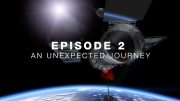
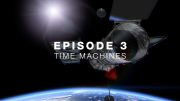


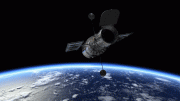
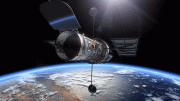
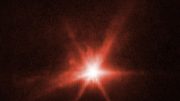
Be the first to comment on "Driving the Hubble Space Telescope [Eye in the Sky Video Miniseries]"